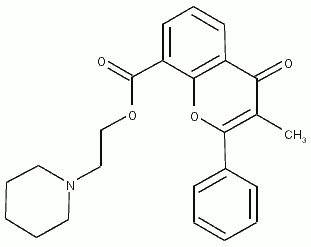Definition
Pilocarpine is a medicine used to treat xerostomia, or dryness of the mouth, caused by a decrease in saliva production following radiation or due to Sjögren's syndrome, a disorder of the immune system that is characterized by the failure of the exocrine glands. Pilocarpine is also known as pilocarpine hydrochloride or Salagen.
Purpose
Pilocarpine is used to treat side effects arising from radiation treatment for head and neck cancers. It alleviates dryness of the mouth and throat and aids in chewing, tasting, and swallowing.
Description
Pilocarpine is a naturally occurring substance found in the leaflets of pilocarpus jaborandi, a South American shrub.
Pilocarpine works by stimulating the function of the exocrine glands, including the glands that produce saliva, sweat, tears, and digestive secretions. It also stimulates smooth muscles, such as those found in the bronchus, gallbladder, bile ducts, and intestinal and urinary tracts.
Pilocarpine was approved by the United States Food and Drug Administration for treatment of dry mouth in 1994, but has been used for treatment of some types of glaucoma for a hundred years. Pilocarpine was effective in relieving xerostomia symptoms after twelve weeks in over half the patients studied; however, the medication may not work for everyone.
Recommended dosage
Pilocarpine is taken orally. It is available in round white tablets containing 5 mg of pilocarpine each. Different patients may require different dosages of the drug. The usual dose for adults is five milligrams taken three times a day. If necessary, the physician may increase the dosage to 10 mg, three times a day. Since increasing the dose increases the likelihood of side effects, the lowest dose that is effective should be used for treatment.
Pilocarpine begins to act 20 minutes after ingestion. It will continue to act for three to five hours, with the maximum effect taking place one hour after ingestion. Twelve weeks of regular use may be required for an improvement of symptoms.
If a dose is missed, it should be taken as soon as possible; however, if it is almost time for the next dose, only the next dose should be taken.
Precautions
Patients may wish to take this medication with a meal to avoid stomach upset; however, pilocarpine will have reduced effectiveness if it is taken with a meal that is high in fat. Patients should drink plenty of water to avoid dehydration due to increased sweating. Alcohol and antihistamines should not be used while taking pilocarpine. Due to the possibility of visual disturbances or dizziness, people using this medication should avoid driving or operating machinery, particularly at night. Patients should continue to see a dentist regularly during treatment even though symptoms may be improved, since xerostomia may increase the likelihood of dental problems.
Studies have not been done to test the safety of pilocarpine use in pregnant or nursing women; very high doses of the drug may cause birth defects in animals. Studies have also not been done to test the use of pilocarpine by children.
Pilocarpine should not be taken by people who are sensitive to it or who have uncontrolled asthma, or certain eye problems, such as inflammation of the iris or angle closure glaucoma. It should only be used with caution by people with breathing problems, gallbladder disease, kidney problems, peptic ulcer, psychological disturbances, retinal disease, or heart or blood vessel disease.
Side effects
The most common side effect of pilocarpine use is increased sweating. Other less common side effects are as follows: nausea and vomiting, irritated nose, chills, flushing, frequent urination, dizziness, weakness, headache, difficulty with digestion, increased tear production, diarrhea, bloating, abdominal pain, and visual problems.
Symptoms of overdose include irregular heartbeat, chest pain, fainting, confusion, stomach cramps or pain, and trouble breathing. Unusually severe or continuing side effects such as diarrhea, headache, weakness, trembling, visual difficulties, nausea, and vomiting may also indicate overdose.
Interactions
Pilocarpine may interact with other medications, reducing or increasing their effects or, sometimes, increasing the side effects of the other medications. Pilocarpine may also be less effective as a result of interaction with other medications. The following drugs may cause interactions:
- amantadine
- anticholinergics
- antidepressants
- antidyskinetics
- antihistamines
- antimyasthenics
- antipsychotics
- beta-adrenergic blocking agents
- bethanecol
- buclizine
- carbamazepine
- cyclizine
- cyclobenzaprine
- disopyramide
- flavoxate
- glaucoma medications
- ipratropium
- meclizine
- methylphenidate
- orphenadrine
- oxybutynin
- physostigmine
- procainamide
- promethazine
- quinidine
Pilocarpine may also interact with alcohol, cocaine, and marijuana.
KEY TERMS
- Exocrine
- Secretes outward by way of a duct.
- Xerostomia
- Dry mouth.



